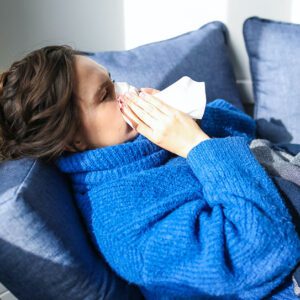CAN YOU RECOGNIZE the symptoms of conjunctivitis (pink eye) when you see them? The pediatrician can help with that. The main ones are redness, itchiness, and either watery or thick discharge. Conjunctivitis is the inflammation of the conjunctiva, which is the clear outer layer of tissue that covers the surface of our eyes, as well as the insides of our eyelids. This condition, while fairly common, especially in school-age kids, is easy to prevent and to treat.
Viral or Bacterial?
The two main forms of conjunctivitis are viral and bacterial, both of which are highly contagious, though they have slightly different symptoms and very different treatments.
Bacterial conjunctivitis involves a lot of thick yellow or green secretions. It usually starts in one eye, then spreads to the other within a few days, and it can spread to other people with direct contact. Prescribed antibiotics from the pediatrician or eye doctor will typically clear it up quickly.
Viral conjunctivitis, on the other hand, comes with more watery discharge and lasts a week or two. Antibiotics won’t do anything against a virus, but warm compresses will help to relieve the swelling and irritation until the inflammation subsides. While it does go away on its own, this form is even more contagious than the bacterial version because it can spread through coughs and sneezes.
Allergy Conjunctivitis
Allergies can also cause eye inflammation. A good way to manage this is with allergy medication or by avoiding the allergens responsible. Contacts-wearers may experience a form of pink eye called Giant Papillary Conjunctivitis, which affects the inside of the eyelid more than the surface of the eye. If your teenager wears contacts, make sure they’re using fresh solution to clean them and taking them out and replacing them as often as they should! Old contacts and recycled solution is a recipe for eye infections.
Chemical Conjunctivitis
Exposure to harsh chemicals, pollution, and chlorine in swimming pools are other pink eye culprits flushing with cool, clean water for several minutes can help to get rid of the chemicals, but if symptoms persist, seek medical attention. This is a good time to go to the emergency room instead of the pediatrician.
Preventing Pink Eye
Here are a few of the pediatrician’s quick tips to follow to minimize your child’s risks of getting pink eye, because it’s always better to prevent a health problem when possible:
- Encourage them to wash their hands thoroughly and often.
- Teach them to sneeze and cough into their armpit.
- Discourage them from rubbing or touching their eyes.
- Make sure they know to NEVER share eye makeup, contacts, or contact solution.
- Make sure they follow the optometrist’s contact lens care instructions.
- Make sure they remove contacts before swimming.
Come to the Pediatrician If Your Child Develops Pink Eye Symptoms
If you have questions for the pediatrician about pink eye or if your child has been experiencing the symptoms, give us a call. You can come in for a walk-in appointment or schedule a pediatric well exam so that we can determine whether the cause is viral, bacterial, allergic, or chemical and then recommend the best treatment. You can learn more about our clinic by checking our business page, and make sure to get directions before heading to our location in Streamwood.




